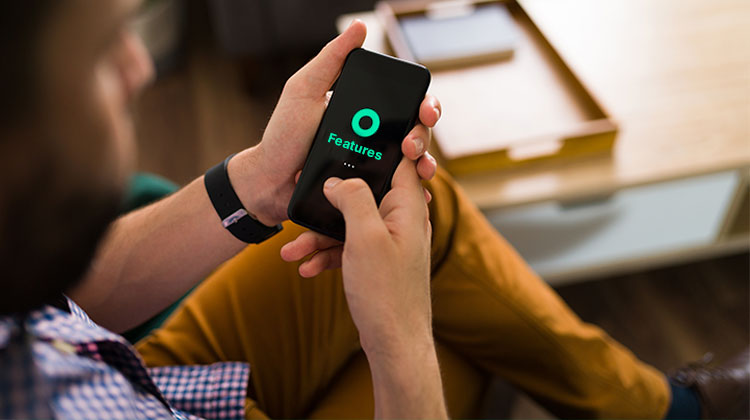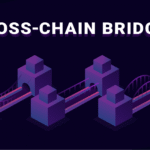It’s no longer enough for apps to just “work.” Today, users expect speed, reliability, and smart features that fit seamlessly into their lives. That’s why modern mobile apps are evolving fast, and with them, so are the expectations around what they should offer.
Some features have gone from nice-to-have to absolutely essential. Geofencing, push notifications, and offline mode are now staples in many top-performing apps—not just because they’re trendy, but because they solve real-world problems. If you’re building or improving an app, these are the tools you need to consider.
Geofencing: Making Apps Aware of the Real World
What is Geofencing?
Imagine your app knows when someone walks into a specific place and can respond instantly. That’s geofencing in action. It sets up virtual boundaries in the real world, using the phone’s GPS or network data to detect when a user enters or leaves a particular area.
How It Works
You set coordinates and a radius—say, around a store or a neighborhood—and the app quietly keeps an eye on whether the user is inside or outside that zone. When they cross that invisible line, something happens: a message is sent, an alert pops up, or a process starts in the background.
Where It’s Used
You’ll find geofencing in a lot of different settings:
- Apps that offer location-based reminders
- Fitness trackers that log running routes
- Retail apps that send deals when you’re near a store
- Transportation apps that trigger check-ins or status updates
- Tools for automating home devices based on your location
Why It’s Useful
Geofencing gives your app context. It lets you create timely, relevant interactions without requiring the user to do anything. It’s about delivering value exactly when and where it makes sense.
A Few Things to Watch
- It can use more battery than usual if not optimized
- It depends on users giving location permissions
- Performance might drop in areas with poor GPS or Wi-Fi signals
Push Notifications: A Direct Line to Your Users
What They Are
Push notifications are short messages sent to a user’s device—even if your app isn’t open. They’re a powerful way to communicate quickly and stay top of mind.
The Different Types
- Transactional: Confirmations, alerts, or receipts
- Promotional: Deals, sales, or special events
- Behavior-based: Personalized messages based on user activity
How to Use Them Well
The most successful apps don’t just blast users with messages—they craft notifications that matter. That means getting the timing right, being relevant, and keeping it brief.
- Don’t send messages at odd hours
- Avoid overwhelming users with constant pings
- Make the message personal and meaningful
The Upside
- Keeps users engaged without opening the app
- Encourages quick action and re-engagement
- Can boost usage and retention with the right strategy
The Risk
If overused or misused, notifications can feel annoying. That’s when users either mute your app—or worse, delete it. It’s all about balance.
Offline Mode: Letting the App Work Without the Internet
What It Does
Offline mode allows users to keep using parts of the app even when there’s no connection. It’s a feature that quietly makes the whole experience more dependable.
Why It Matters
Connectivity isn’t always a given. Whether someone’s traveling, on the subway, or in a rural area, they should still be able to interact with your app. Offline mode makes sure they can keep going without interruption.
How It Works Under the Hood
- Local storage holds data temporarily
- Syncing mechanisms update the cloud once the user reconnects
- Smart conflict resolution ensures data stays accurate and clean
Real-World Uses
- Navigation apps that keep maps loaded
- Note-taking apps that save locally and sync later
- Messaging apps that queue messages for when the user gets signal
- Productivity tools that track actions offline
What You Need to Handle
- Sync errors or data clashes if users edit content offline
- Letting users know they’re offline to manage expectations
- Smoothing out the transition between offline and online use
Blending These Features Without Making Things Complicated
Creating a Seamless Experience
These features are powerful, but if they’re bolted on awkwardly, users will notice. The goal is to make them feel natural—integrated into the flow of the app without drawing too much attention.
Permissions and Transparency
Modern users are privacy-conscious. Ask for permissions clearly and only when you need them. Be upfront about why your app wants access to things like location or notifications—and make it easy to opt out.
Don’t Forget Accessibility
Not everyone uses apps the same way. Make sure all users, regardless of ability or device type, can benefit from these features. Test on different platforms and devices, and design with accessibility in mind.
Tech Tips for Building These Features the Right Way
Choosing Your Tools
Look for SDKs and APIs that are well-documented and supported. Whether you’re working with React Native, Swift, or Kotlin, pick tools that help you build these features in a scalable, maintainable way.
Platform Differences Matter
What works on Android doesn’t always behave the same on iOS. Be ready to handle these differences—especially with how each system handles location tracking and notifications in the background.
Why These Features Make Business Sense
They Keep Users Coming Back
People are more likely to stick with an app that’s helpful, timely, and available even when they’re offline. That’s where geofencing, push notifications, and offline mode shine.
They Create Smarter, More Useful Apps
These aren’t gimmicks. When used well, they make your app feel responsive to the user’s world, not just the screen. That’s the kind of experience people remember—and recommend.
They Support Long-Term Growth
As your app scales, reliability and user engagement matter even more. These features help you build an app that users can trust, wherever they are.
Main Key Takeaways
- Modern Mobile Apps stand out by solving real-world problems with thoughtful features
- Geofencing brings location intelligence to your app
- Push notifications keep users informed and engaged, if done right
- Offline mode ensures the app works reliably, no matter the connection
- Combine these features thoughtfully, with user experience and privacy always in mind
FAQs
Is geofencing safe from a privacy standpoint?
It depends on how it’s handled. Always request permission, be transparent about how location data is used, and offer clear opt-out options.
Will push notifications drain my battery?
Properly managed, they have minimal impact. It’s excessive or poorly implemented notifications that can cause issues.
How does offline mode keep data accurate?
By syncing changes once a connection is restored and using conflict resolution techniques to manage overlapping edits.
Are these features easy to implement on both iOS and Android?
They can be, but each platform has its quirks. You’ll need to account for different permission systems, APIs, and background processing rules.
Do I need all three features in my app?
Not necessarily. Choose based on your users’ needs. But when these features align with your app’s purpose, they can significantly improve user experience.


